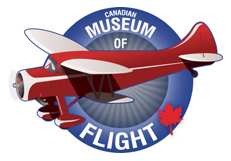 | |
 | |
| Established | 1977 |
|---|---|
| Location | Langley, British Columbia, Canada |
| Coordinates | 49°05′58″N122°37′34″W / 49.099394°N 122.626068°W |
| Website | www.canadianmuseumofflight.ca |
The Canadian Museum of Flight (formally the Canadian Museum of Flight Association since 1998) is an aviation museum at the Langley Regional Airport in Langley, British Columbia, Canada. The museum has over 25 civilian and military jets, piston driven engine aircraft, gliders, and helicopters on display, six of which have been restored to flying condition. Other displays include an aviation art gallery and aviation artifacts.